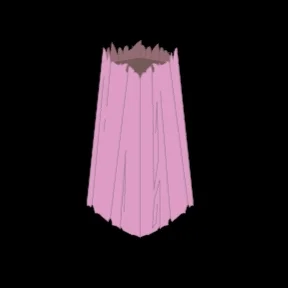
Schools Out For Summer. Or in my case: Out for about two weeks and then back into the Fall Semester.
We’re in the home stretch now. This update marks the end of my weekly updates for the Summer semester, and signals the end of finals.
Because the end of the semester is so jam packed with studying and test taking, I needed to fit working on this project into the small breaks in between. I did manage to get a lot done this week regardless.
I focused a lot on small idle animations as well as a demo evolution animation tree for the Bumblebee hybrid. I also did some brainstorming on the names for the hybrids.
Bumblebee X Eastern Purple Coneflower
For animating the Bumblebee hybrid, I use Adobe After Effects and imported in my Illustrator file as a composition. This way all of the layers were already placed and ready to be worked on. I started by rearranging all of the layer’s centers to be where the joints are realistically instead of the true centers. The allows for movement and rotation along the joints and makes it easier to make sure everything is moving how you would expect. When I was done I added the animation to the Adobe Media Encoder Queue and exported the gif.



A Bumblebee belongs to the genus Bombus of the Apidae family. And the Eastern Purple Coneflower is known as Echinacea purpurea scientifically. Given that these creature are hybrids, I felt that naming them should be a hybrid method as well.
So I went with the name Bombus purpurea. It basically translates to Purple Bumblebee. Although, if it was truly a hybrid name, according to the International Association for Plant Taxonomy the correct way to indicate a hybrid would be to simply call it Bombus ruderatus x Echinacea purpurea.
Because I thought Purple Bumblebee sounded a bit too generic, I decided to add a bit to the common name and picked out a trait that was not only referenced in the scientific name but also was a distinct characteristic. The wings. In the hybrid design the wings are transparent. So I settled on the name Glass-winged Purple Bumblebee.
Fennec Fox X Bunny Eared Cactus
Animating the Fennec Fox hybrid was done in much the same manner as the Bumblebee.



The final name I went with for this hybrid was Bunny-Eared Fox, with the scientific name of Opuntia vulpes. The first half of the nomenclature comes from the scientific name of the Bunny Eared Cactus, which is Opuntia microdasys. And the second half comes from Vulpes zerda. Opuntia itself translates to “prickly” and Vulpes is simply just “fox”. So the true translation would be “Prickly Fox”.
Manta Ray X Mid-Shore Wrack
Because animals move differently in water and don’t have joints in the same manner that many land and sky animals do, I took a different approach to how I made the Manta Ray’s idle animations. Instead of having multiple layers for different pieces of the ray, I had one singular layer that I applied puppet pins to and then manipulated them in that way. It was a bit more challenging, but the end result came out much smoother than the land animals and it seems like the Manta is gliding rather than moving joints.



I also took inspiration from bioluminescent algae and insects like a Lightning Bug and made it so that the inflated sacs on the back of the Manta’s would glow.

I knew that I wanted the common name for the Anthid to be Oceanic Mid-Shore Manta, but I had no idea what the scientific names of these species were. The Giant Oceanic Manta Ray’s scientific name turns out to be Mobula birostris, and the scientific name of Mid-Shore Wrack is Fucus vesiculosus. Fucus is derived from the Greek word for seaweed, phukos, and vesiculous is Latin for “covered with little blisters”. While I can’t find any information on what Mobula means, the birostris part of the Manta’s scientific name translates to “two snouted”. In the end the combination of the two names that I felt worked the best was Mobula vesiculosus.
Evolution Animation
In order to create an evolution demo, I needed to do was to create a small piece that would serve as an animation transition. To do this I used an animation element mandala and adjusted it’s speed, opacity, and rotation. I also added in a blurred circle to act as a glow and hid the change between Anthid stages.

One the transition piece was created, all I needed to do was to combine all of the elements together. I created a new composition and dragged in each scene that I would need. After that I spaced out the timing of the transitions so that the elements would overlap properly and it would give the impression that the Anthid was changing form.

Update Fun Fact: The Opuntia microdasys and the Oputinia rufida are classified as two separate species, but they are so closely related that some botanists will treat the two as a single species.
The semester may be close to over, but that doesn’t mean I’m not going to work on this project anymore. I completely intend to keep updating this blog and creating new characters, but I probably won’t be churning things out nearly quite as fast as I have been.
Until next time!
Leave a comment